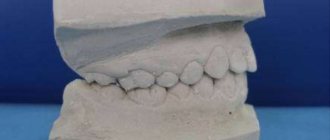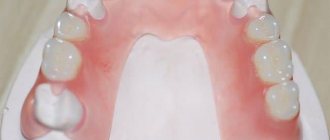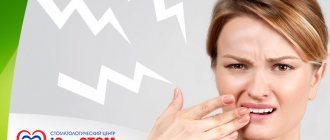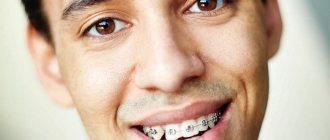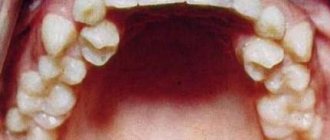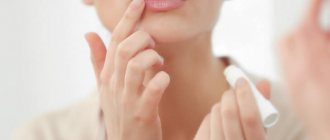All those who have had to deal, to one degree or another, with the problem of treating injuries and diseases that require immobilization (immobilization of limbs, joints) know how much trouble this method brings. For centuries, the material of choice for immobilization has been gypsum.
Of course, this material has a number of advantages necessary for the treatment of patients. Plaster is an inexpensive material; unhardened plaster is very plastic, which allows you to give the required shape to the bandage. Plaster immobilization is very simple to manufacture. But along with many positive qualities, gypsum immobilization has a number of significant disadvantages. First of all, in order for the bandage to have sufficient strength, it requires the application of many layers. This causes the bandage to become thick and heavy. With such a bandage it is difficult to move and even take care of yourself. In our dynamic age. When literally every minute counts for many people, an injury associated with the need to wear a cast becomes a real tragedy. After all, with a thick and heavy bandage it can be difficult to get to the kitchen and toilet, let alone to work.
The second, but no less important problem is related to the high hygroscopicity of gypsum. Gypsum easily absorbs and retains moisture for a long time, which is why it loses its hardness and rigidity. A bandage that accidentally falls under water immediately loses its medicinal meaning. And there is only one thing you can do with it - throw it away. This raises the problem of hygiene.
It is quite difficult to maintain basic hygiene principles with a plaster cast. It's hard to even wash your face. It is possible to take a shower only in parts, carefully wrapping the injured limb in plastic. You have to forget about the bathroom during treatment. At this time, dead epithelium accumulates under the bandage, the skin under the bandage sweats, and sometimes even an unpleasant odor occurs. Those who had to wear a plaster cast for a long time must remember how unsightly the limb looks immediately after the plaster is removed.
Gypsum is a material that, after drying, crumbles and stains clothes and bedding. On the bed of a victim who is in a cast, there are always plaster crumbs in abundance. And the bed itself looks untidy. When wearing immobilization for a long time, there is often a need for periodic dressing changes. The synthetic materials Scotchcast and Softcast do not have these disadvantages. Polymer immobilizing bandage - artificial plaster Scotchcast Plus Scotchcast Plus can completely replace a plaster cast in the treatment of fractures. The combination of the extraordinary strength of Scotchkast Plus and the lightness of the material (4-5 times lighter than gypsum) makes its use much more comfortable. The material is non-toxic and does not cause allergic reactions. It allows evaporation from the skin and oxygen from the outside (“breathes”), which prevents itching and maceration. The Scotchcast Plus artificial plaster bandage is not afraid of moisture, so the patient can take a shower.
Consequences of long-term rigid immobilization in the treatment of fractures
One of the most unique properties of the musculoskeletal system is its ability to “adapt” to different situations. Functional load helps to increase mass and strength. Lack of exercise leads to atrophy and weakness. The result of rigid immobilization for a long period was: muscle atrophy, shortening of the joint capsule, leading to stiffness of the joints; demineralization of bone mass, weakening of ligaments and tendons, and poor circulation. Thus, the consequence of long-term immobilization is a combination of atrophic processes in bone and muscle tissue - “fracture disease.” To do this, in order to reduce these complications to a minimum, the 3M company suggests using a combination of two materials: rigid Scotchast and semi-rigid Softcast.
How plaster casts are applied
The procedure for applying plaster takes place in the dressing room, where there is all the necessary equipment for storing and making plaster casts.
- The area of skin on which the plaster cast will be applied is lubricated with petroleum jelly, thereby preventing the plaster from sticking.
- Plaster bandages are immersed in warm water. An indicator that the bandages are sufficiently moistened with water and can be removed is the absence of air bubbles in the water.
- The bandages are applied to the skin, thereby forming a hardening bandage - a splint, which is modeled in accordance with the contours of the body. Each layer is carefully smoothed. Usually 8-10 layers are applied to form a durable splint.
- Cotton is placed on the bony prominences to avoid pressure on them.
- Often, the cast is applied in such a way as to immobilize the two joints adjacent to the fracture.
- When casting, the fingers of the upper and lower extremities always remain open. By their condition (sensitivity, color) you can determine whether the plaster cast is applied correctly. In case of numbness or discoloration of the fingers, you should immediately consult a doctor.
Material that “takes care” of your health and comfort
Plastic (silicone, polymer) plaster relatively recently began to be used in traumatology. It has a number of significant advantages over conventional gypsum:
- Ease. Plastic plaster is 4-5 times lighter than usual, and it is much easier to move in such a bandage.
- High strength. Polymer plaster will not crumble or break, even with prolonged wear, and some types of material can be reused.
- Waterproof. With a silicone cast, you can take a shower and/or bath without fear that the cast will get wet and swell.
- The ability to "breathe". The material freely allows air and skin vapors to pass through, so there is no need to worry about itching and irritation of the skin under the bandage.
- Hypoallergenic. Plastic plaster does not cause any allergic reactions.
- Comfort. A bandage made of artificial plaster looks more neat and aesthetically pleasing, and if the material becomes dirty, it can be easily “washed out.”
There are several types of plastic plaster: Softcast, Scotchcast, Turbocast and NM-cast. Each of them has a specific purpose, indications and contraindications, so which material is best to use in a particular case is decided only by the attending physician.
The only drawback of polymer plaster is that you need to pay money for it, whereas a traditional plaster cast can be applied completely free of charge in any public clinic. However, taking into account all the disadvantages of conventional and the advantages of plastic plaster, most victims are inclined to the latter option.
If you are interested in the possibility of treating fractures and other traumatic bone injuries using modern, reliable and safe plastic plaster, make an appointment with Best Clinic specialists by contact numbers or through a special form posted on our website.
Properties
Medical gypsum has gained its recognition due to its low price, availability, ease of handling and such important properties for therapeutic use as:
- non-toxic, harmless;
— no smell;
- ability to keep its shape for a long time;
— resistance to interaction with water;
— low shrinkage coefficient.
The powder has increased water absorption; when combined with water, it reacts to form gypsum dihydrate and transform the mass into a solid state. The hardening rate is affected by the gypsum firing conditions, water temperature, gypsum-water mass ratio, and existing impurities. Water heated to 37 °C accelerates the hydration reaction (binding of particles), everything above and below this temperature slows it down.
Water consumption per kilogram of powder is 0.6–0.7 liters. Hardening time is 10–15 minutes. You can evaluate the suitability of the plaster by picking it up and squeezing it between your palms. If it crumbles when unclenched, then the material is dry and suitable for use. If a lump forms, it means the plaster is wet and cannot be worked with.
Plates as a way to connect bone fragments
Fixing plates after a fracture are designed to fasten fragments. The fixed fragments, put together, begin to grow together. The implants keep them from coming apart. They are made from materials that do not corrode and do not have a harmful effect on the human body while in the body. These are the following materials:
- titanium alloy;
- stainless steel;
- alloy of chromium, molybdenum, nickel;
- artificial materials that dissolve in the patient’s body.
The cost of a fracture plate will depend on the material from which it is made.
When performing an osteosynthesis operation, the surgeon places metal fasteners under the soft tissues of the body, directly on the bone, fixing them on the main surface. When installing a plate for a fracture , doctors bend the product to adapt it to the anatomical features of the bone, adjusting the part to an individual shape. After ensuring stable fixation of the required position, the wound is sutured.
Titanium plates after fracture
The strength of titanium plates allows you to hold bone fragments in the desired position until they are completely fused. They serve as support during movement and stress on a broken bone, and perform protective functions for internal organs. They are used on different parts of the human body during surgical and orthopedic interventions.
For each part of the skeleton, different types of fixators have been developed. Depending on the location of the fracture on the bone, a specific category of product is selected. Special tools are used to install and stabilize the elements, making the process easier and more efficient.
What types of artificial plaster are there?
There are several types of polymer gypsum. The most famous are scotchcast, softcast and turbocast.
Scotchcast is a polymer plaster, strong and rigid, due to which it reliably immobilizes the fracture. The lightest of all artificial bandages. A special lining stocking is worn under it so as not to injure the skin. Scotchcast comes in different colors, which will appeal to children and lovers of bright colors.
Softcast allows you to create bandages of varying stiffness. After hardening, the material remains semi-rigid, which allows you to maintain muscle mobility in the damaged area. At the same time, the material is flexible, but not stretchable, which helps maintain its original shape. It is used not only for fractures, but also for sprained limbs.
Turbocast is the most famous polymer gypsum made of thermoplastic. It makes it possible to give the bandage any shape, which makes it indispensable for the most complex fractures, including in children and adolescents. The special design allows the patient to independently remove and put on the bandage (with the doctor’s permission).
Classification
According to the requirements of the international hardness standard, the following types are distinguished:
— soft gypsum, used for making impressions in orthopedic dentistry;
- ordinary (medical) plaster, used in general surgery and orthopedics;
— hard plaster, intended for making models of jaws in dentistry;
— especially strong plaster, used to create collapsible models of jaws;
- ultra-strong plaster, intended for models in dental orthopedics that require ultra-high strength, made with the addition of synthetic components.
When mixed with water, after 5-7 minutes the gypsum begins to harden, gaining strength. The material acquires its final characteristics and hardness after complete drying.
Where can I buy
Medical gypsum is produced by companies that produce products for construction and finishing works. Its main difference from gypsum for construction purposes is the degree of grinding, and as a result, faster hardening times. You can purchase plaster for medical practice directly from the manufacturer. One of the leading companies is Volma.
Medical gypsum "Volma" is produced in accordance with TU 5744-013-78667917-13, the product from "Samaragips" - in accordance with TU 5744-013-21151476-2014 in paper bags weighing 20 or 25 kg. The cost per kilogram varies depending on the type of gypsum and its purpose. On average it is 15–25 rubles.
Medical plaster gauze bandage | Meridian, China
It has excellent characteristics and reviews. Base: Bleached gauze with a density of 400 g/m² without joints or tears. Plastic rod inside the roll: Yes Composition of the mixture: Calcium sulfate no less than 85%, Adhesive composition: high quality PVP mixture, Looseness of the gypsum composition: no more than 0.5%; Leaching level of the gypsum composition: no more than 1%; Setting time: 3-5 minutes; Hardening time: 5-6 minutes - Meridian plaster bandage takes 2nd place in sales. Shelf life: 3 years, China Price: 3 m x 10 cm - 39.00 rub. 3 m x 15 cm - 60.30 rub. 3 m x 20 cm - 78.50 rub. Weight and volume of one transport box: 3 m x 10 cm - 0.02 m³, 8.2 kg; 3 m x 15 cm - 0.03 m³, 9.6 kg; 3 m x 20 cm - 0.02 m³, 8.2 kg. All products have certificates of conformity and are a quality product on the Russian market.
Advantages of plastic gypsum compared to traditional
- Quick fix . You can change and fix the polymer bandage in 20-30 minutes at home.
- Simple modeling . The bandage takes on the required shape, making it suitable for fixing even hard-to-reach parts of the body and joints.
- Sturdy mount . The material ensures immobilization of the injured limb throughout the entire recovery period.
- Water resistance . The bandage can be wetted: take a full bath or shower, or swim.
- Safety . The product does not cause irritation, rashes, skin inflammation, or diaper rash.
- Bandwidth . It does not need to be removed to perform a control x-ray, computed tomography or magnetic resonance imaging.
- Wide selection of colors . The polymer bandage is available in different colors, which is especially important when applied to children.
